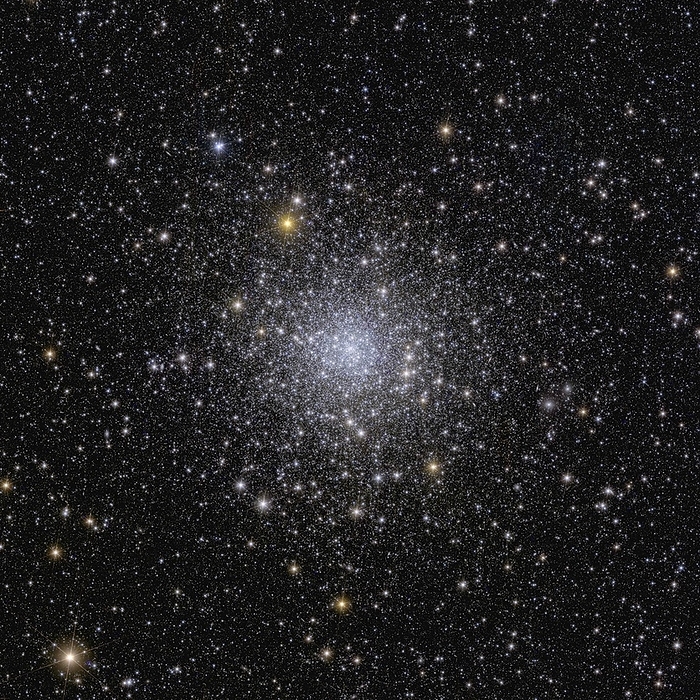
RM
Globular cluster NGC 6397, Euclid image
Euclid telescope image of globular cluster NGC 6397, one of the first five images released from Euclid on the 11th of November 2023. Globular clusters are collections of hundreds of thousands of stars held together by gravity. At around 7,800 light years away, NGC 6397 is the second closest globular cluster to Earth, and it is found orbiting the Milky Way. Euclid is the first telescope able to observe an entire globular cluster whilst maintaining sharp images of features in its outer reaches, and do so in just one hour. This quality will allow Euclid to create the largest 3D map of the universe to date as part of its mission to investigate how dark matter and dark energy have shaped the universe. By observing billions of galaxies up to ten billion light years away, Euclid will provide a valuable insight into the way that galaxies expand and move. From this, it will be possible for the properties of dark matter and dark energy to be inferred. This image was obtained by combining data from Euclid's visible instrument (VIS) and near-infrared spectrometer and photometer (NISP)., by EUROPEAN SPACE AGENCY/SCIENCE PHOTO LIBRARY

More
Top Categories
